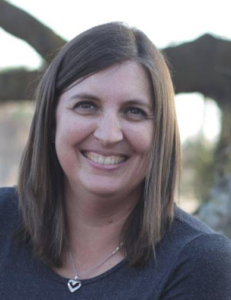Watch a brief video about the Teaching and Learning Conversation on this topic.
College students who receive instruction on scientific writing are more prepared to become scientific writers than other students (Fallahi, Wood, Austrad, & Fallahi, 2006), yet many students report that they lack skills for writing within their disciplines (McGovern & Hogshead, 1990). As a librarian, I (Robyn Reid) seek to support students as they become information literate, which the American Library Association (ALA) defines as cultivating “integrated abilities encompassing the reflective discovery of information, the understanding of how information is produced and valued, and the use of information in creating new knowledge and participating ethically in communities of learning” (ALA, 2015, para. 5). Finding, reading, understanding, and writing scientific information are all examples of information literacy, and students benefit from developing both information literacy and scientific writing skills.
In a 2017 research project, TCU librarians learned that university faculty members at TCU (N=100) expect students to demonstrate effective research skills. In this study, the librarians identified nine core research skills which include: topic selection, search strategies, finding sources, differentiating source types, evaluating sources, synthesizing information, summarizing information, citing sources, and understanding citations. Faculty reported having high levels of expectations for students’ research skills in each of these areas, yet perceived that students operated at lower skill levels. Later in 2017, TCU’s College of Education (CoE) asked me to develop an American Psychological Association (APA) format tutorial for their students. The ability to use APA format is an expectation the College of Education maintains for their students, including the ability to evaluate the quality of cited sources.
Other disciplines across TCU’s campus also use APA format, including nursing, psychology, and social work. APA format is a writing style that faculty members use when submitting research study manuscripts to peer reviewed journals, offering presentations at national academic conference, and when referencing sources within textbooks. Students are also expected to learn how to use APA format. For students, correct use of APA format demonstrates professionalism in their course assignments.
The APA tutorial I created for the CoE contains 42 content sections and approximately 180 quiz questions addressing topics from “how to format papers” to “how to correctly cite sources in APA format.” The tutorial is now available upon request for all TCU departments, and instructors can email me directly (r.reid@tcu.edu) to request that the tutorial be added to a TCU Online course shell.
I (Tee Tyler) have a vested interest in helping students develop APA writing skills. In the Fall 2016 semester, my first semester at TCU, I begin identifying specific challenges students faced when writing papers using APA format. Over the course of two semesters, I identified what I perceived to be the most common mistakes and challenges that students faced. The next academic year, 2017–2018, I provided students with an academic writing guide containing answers to the most common APA format issues voiced by students the previous year, yet it still appeared that students reported difficulties.
The idea later came to me that if students could develop proficiency in APA format, they could teach their fellow students. This plan provides two benefits: (1) when students achieve proficiency in APA format, they can improve their own assignments and (2) when students help other students, they begin to develop leadership skills as they support their classmates in a mentorship capacity. These two potential benefits motivated me to develop a writing peer mentorship program for my students.
I consulted with the Koehler Center to identify other individuals within the University who had a vested interested in improving students’ scientific writing abilities. They connected me with Robyn Reid. This peer mentorship program incorporates quiz questions Robyn created (mentioned above) and an academic writing guide that I created for students to improve their APA format writing skills.
A primary objective I have as an instructor is to cultivate a collaborative learning community, i.e., to encourage students to work together to achieve course learning outcomes. A peer mentorship program allows me to meet the goal of students gaining knowledge, developing skills, and supporting one another. In this manner, students view themselves as responsible citizens within the classroom.
This peer mentorship program represents a collaboration between a TCU Librarian and a TCU Social Work professor. We pilot tested the program in Fall 2018, resulting in four undergraduate social work students becoming trained peer mentors and taking on several peer mentorship appointments. We welcome others to join us in finding new ways to employ peer mentorship programs on campus.
References
American Library Association. (2015, February 9). Framework for information literacy for higher education. Retrieved from http://www.ala.org/acrl/standards/ilframework
Fallahi, C. R., Wood, R. M., Austrad, C. S. & Fallahi, H. (2006). A program for improving undergraduate psychology students’ basic writing skills. Teaching of Psychology, 33, 171-175. doi:10.1207/s15328023top3303_3
McGovern, T. V., & Hogshead, D. L. (1990). Learning about writing, thinking about teaching. Teaching of Psychology, 17(1), 5–10. doi:10.1207/s15328023top1701_1


This article was written by Robyn Reid, Social Sciences Librarian, and Tee Tyler, Assistant Professor of Social Work, for the Fall 2019 Issue of Insights.